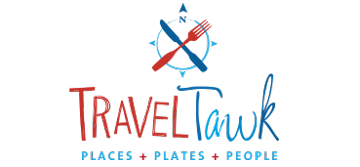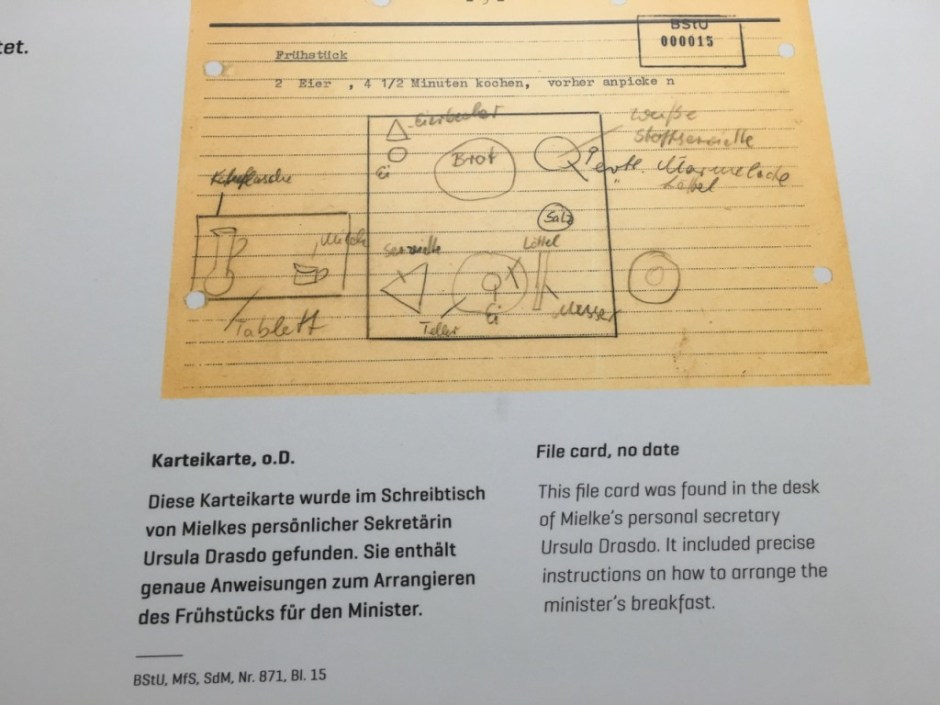The first thing I do when I arrive at Gleneden Beach, a hamlet on Oregon’s Central Coast, is take a deep breath. The clean, crisp air is an intoxicating combination of briny ocean and the refreshing scent of the pines that line the craggy shoreline. In early Spring there are no crowds.

There also aren’t any luxury hotels or fancy restaurants, but the natural beauty of the place draws us back with its tranquility, miles of pristine beaches, wooded hiking trails, a lighthouse or two, and small towns that are somewhere between charming and touristy. So what is there to do? Let’s start with the whales!

Whale Watching Season
The gray whales begin their 10,000-mile migration between Baja California and the Bering Sea in the late winter months and March is prime viewing season on Oregon’s Central Coast. Weighing in at about 35 tons and averaging around 45 feet in length, thousands of gray whales–20,000 of them according to some sources– pass by Oregon’s coastal communities in early spring through June.

It’s exhilarating to see these amazing animals breach and spyhop so close to shore. We learned that spyhopping is when whales raise their heads vertically out of the water to get a better sense of their surroundings. They often do this when tour boats are nearby—maybe they like to see us as much as we enjoy seeing them.

Depoe Bay, the self-proclaimed whale watching capital of Oregon, and nearby Boiler Bay are premium locations for catching the show these leviathans put on at this time of year.

Besides gray whales, marine life aficionados with a sharp eye or a good pair of binoculars may spot orcas, sperm whales, dolphins, porpoises, and even blue whales cavorting in the waves.

The Depoe Bay Whale Watching Center was closed for construction in March while we were there, but we visited last year and saw plenty of whales and sea life from both the outdoor and indoor viewing platforms. It was great to come in out of the rain and still watch the whales go by. Helpful staff told us that during the busy summer months, around 100 of these majestic creatures live in the waters right off Depoe Bay.



Volunteers can usually be found at 24 coastal sites marked by Whale Watching Spoken Here signs, charting the whales’ migration and noting the numbers of sea mammals and birds spotted during their watch. Docents will not be at their stations and viewing equipment will be unavailable this year due to the public health crisis. Check out whale watching videos at oregonstateparks.org.

Yaquina Head Outstanding Natural Area and Lighthouse
I think there’s something romantic about lighthouses and this one is particularly captivating. Perched 162 feet above the churning sea, the Yaquina Head lighthouse is visible from miles away. Standing a majestic 93 feet tall, Oregon’s tallest lighthouse has been guiding mariners to safety since August 20, 1863.

Constructed of 370,000 bricks imported from San Francisco, the second oldest lighthouse on the Oregon coast shines its warning beacon from its original 400 lb. Fresnel lens. The lens, then a technical marvel, was built in Paris and transported through the Panama Canal to what was then called Cape Foulweather—for good reasons.

Many ships foundered on the rocky shoals off Yaquina Head before the lighthouse was operational. Look for the memorial to those lost at sea at the base of the lighthouse.

Stop by the Interpretive Center before hiking down the path to the lighthouse and tidal pools. There is a wealth of information and knowledgeable rangers available to help you make the most of your visit.



After viewing the short films, photographs, diaries and displays that tell the story of the Yaquina Head lighthouse and the people who kept it running for more than 100 years, it’s not hard to imagine light keepers going up and down the lighthouse’s 114 steps several times a day carrying 20 lb. buckets of tallow in each hand to keep the lamp lit. Instructions circa 1902 warn that the light must be kept burning at all times and at all costs. Inspectors could arrive unannounced, at any time day or night; to be sure the mandate was kept. Life could be hard and lonely. It wasn’t until 1966 that Yaquina Head’s light was automated and light keepers were no longer needed.


There are also films and exhibits about the vibrant marine life and seabirds visitors may encounter. In addition to peregrine falcons, pelagic and double-tufted cormorants, tufted puffins, and storm petrels, Yaquina Head hosts one of the Pacific Northwest’s largest colonies of the common murre, a seabird that tends to gather in large groups and float noisily around. We heard them long before we saw them but what a sight it was!

Today, more than 400,000 visitors come annually to see the lighthouse and grounds, explore Cobble Beach and the tide pools, watch for whales and dolphins, enjoy the seabirds and visit the interpretive Center. Visitors are free to explore the 100-acre natural area on their own and during summer months, when ranger-guided tours are available, it’s possible to go inside the lighthouse.

Take a hike up the hill behind the former vegetable gardens for fantastic views of the lighthouse and the breathtaking coastline or climb down the wooden stairway to the beach to see anemones and other sea life up close. Or do both, as we did.

Those with impaired mobility may want to drive to the lighthouse. All areas of the Interpretive Center are accessible.
Pacific Maritime & Heritage Center and Burrows House

Curiosity and shipwrecks drew us to the Pacific Maritime & Heritage Center, a Lincoln County Historical Society Museum. Walking past Bay Boulevard’s touristy shops across from Newport’s bustling harbor, we saw signs for the museum and were intrigued.

Chippendale dancers, off-track betting enthusiasts and night clubbers frequented this once stately home before a careful eight-year renovation transformed the Smuggler’s Inn into the Pacific Maritime & Heritage Center. Open since 2013, the museum has a wealth of information on the area’s history, the role of the fishing industry in the region’s growth and the many shipwrecks that have been documented along the rugged Oregon coastline since 1852. Maps, photographs, exhibits and helpful docents bring the past to life here.


Many of items in the museum’s collections were donated by the local community– from maritime gear to artifacts recovered from shipwrecks. Newport’s sister city, Mombetsu, sent the colorful Japanese fishing flags that fly above the galleries. They are meant to bring luck to the local fishing fleet and are a gesture of good will between the cities. Be sure to step out onto the roof terrace and enjoy the expansive views before you leave!

Burrows House, also a Lincoln County Historical Society Museum, is just a five- minute drive away. The Victorian house began life as a private home, and was used as a boarding house and finally a funeral parlor before becoming part of the museum. Touring the modest dwelling, which was built in 1895, visitors get a good sense of what life was like for Newport residents in the 19th and early 20th century. Don’t miss the eight-foot long toothpick model of the Yaquina Bay Bridge.


Hatfield Marine Science Center

Looking for family fun and the chance to spend quality time with an octopus? Oregon State University’s Hatfield Marine Center is just across the bridge from Newport’s busy commercial harbor and definitely worth a visit, particularly if you have young ones in tow. We stopped by on a rainy day and it was easy to see why more than 150,000 people a year are drawn to the dynamic marine education center.

of wonder in visitors of all ages.


The Visitors Center’s aquatic animal exhibits, hands-on experiences, and interactive displays make learning fun. The Center’s resident octopus is a big draw. Visitors can watch him “hunt” for his food, play with his toys and explore his environment. Hatfield has an Octocam, so even after returning home, fans can keep tabs on the popular cephalopod.

Go Exploring
Oregon’s Central Coast has so many beaches, trails, natural wonders and small towns to discover that you can be as busy as you like.

Take a drive to Devil’s Punchbowl and watch the swirling sea churning up inside the hollow rock formation. Stop in to Cliffside Coffee & Sweets and get an ice cream cone or chocolates while you’re there.



Pack a picnic and head over to Fogerty Creek. Check out the tide pools. Hunt for agates during low tide on Gleneden Beach. Head to Lincoln City and search for the “finders keepers” glass floats or make your own at Lincoln City Glass Center.

Stroll through historic Nye Beach for a little retail therapy and enjoy the sandy beach there. Or just sit and watch for whales.

Practicalities
Unless you live within driving distance, fly into Portland (PDX), rent a car and drive the 2-1/2 hours to the coast. It’s a scenic drive once you’re past the suburban areas.

There are a few hotels and a lot of rentals and timeshares along Oregon’s Central Coast. We rent a fully- equipped condo and need provisions to make breakfast and picnic lunches when weather allows. Chester’s, a mid-sized grocery between Gleneden Beach and Depoe Bay, has a good selection and all the necessities, plus a video rental on-site. Newport and Lincoln City—the two largest towns in this area– have the chain stores and more shopping options.

As much as I love to cook, I also like a good dinner (or lunch) out. Our favorite restaurants are:
Tidal Raves Seafood Grill –We spotted nine whales during one dinner at this Depoe Bay mainstay! Portions are generous and full meals include soup or salad so you can probably skip the appetizer.



Fish dishes are fresh and delicious– try the halibut or the BBQ shrimp for something a little different. Nightly specials have never disappointed and the steaks are good, too. This place is extremely popular with locals and visitors. Make a reservation.
Side Door Café– There are no ocean views, but there is plenty of ambiance at this local Gleneden Beach favorite. The food is hands down delicious and that’s what keeps people coming back for more.




Try the Dungeness crab cakes, or the salmon or halibut – however the kitchen is preparing them. The hazelnut crusted pork and rack of lamb are both outstanding. Save room for the homemade desserts! Reservations are essential.
Local Ocean– It’s all about the fresh fish here–right off the boats from Newport’s busy commercial harbor just across the street.




We like the crab cakes, fish and chips, fish tacos, albacore tuna wrap and whatever the daily special is. The burgers are good, too. There are terrific harbor views from the upstairs dining area and bar. Local Ocean has a retail seafood market on the ground floor so you can bring home today’s catch, too.
Red Roof Inn— Follow your nose to this Gleneden favorite. The mouthwatering aroma of fresh baked goods and strong coffee kept us coming back day after day.


The friendly staff will make you feel like a local and their sandwiches are amazing. Open for breakfast and lunch only.
Kyllos- Big and busy, this Lincoln City restaurant is right on the water and serves continually from lunch on.



If you’re lucky enough to get a window seat, the views are spectacular. Happy hour, or lunch in the bar, is the budget- friendly way to go. Try the kale salad and fish tacos.
This is just a sampling of the fun and food that await on Oregon’s beautiful Central Coast. Add it to your list of Springtime get-aways! Or summer get-aways, fall get-aways…




























































